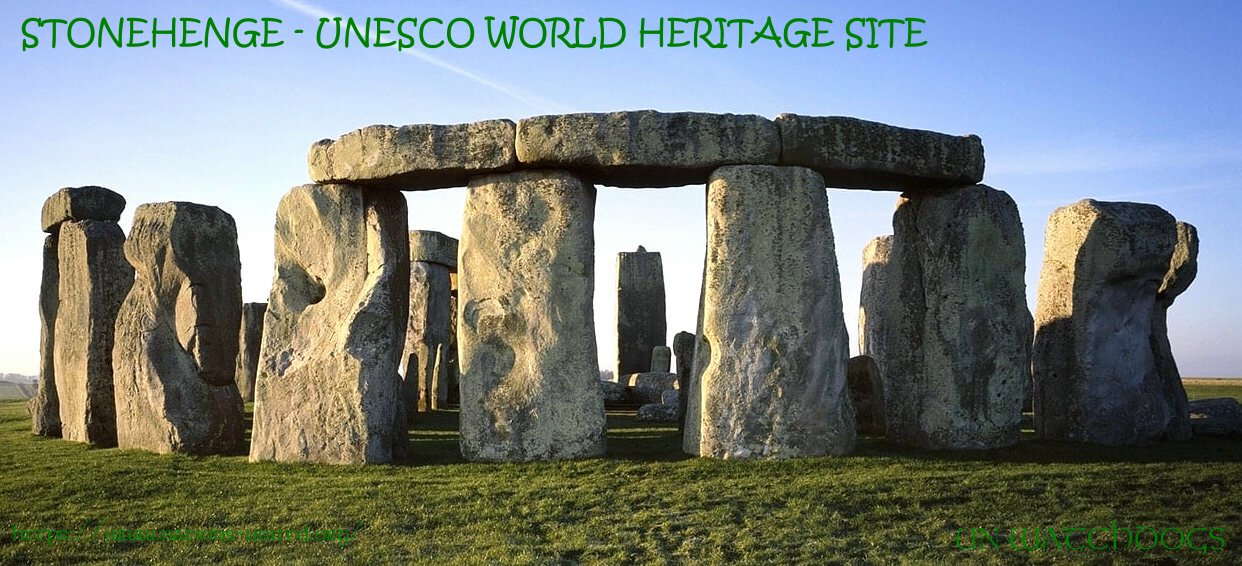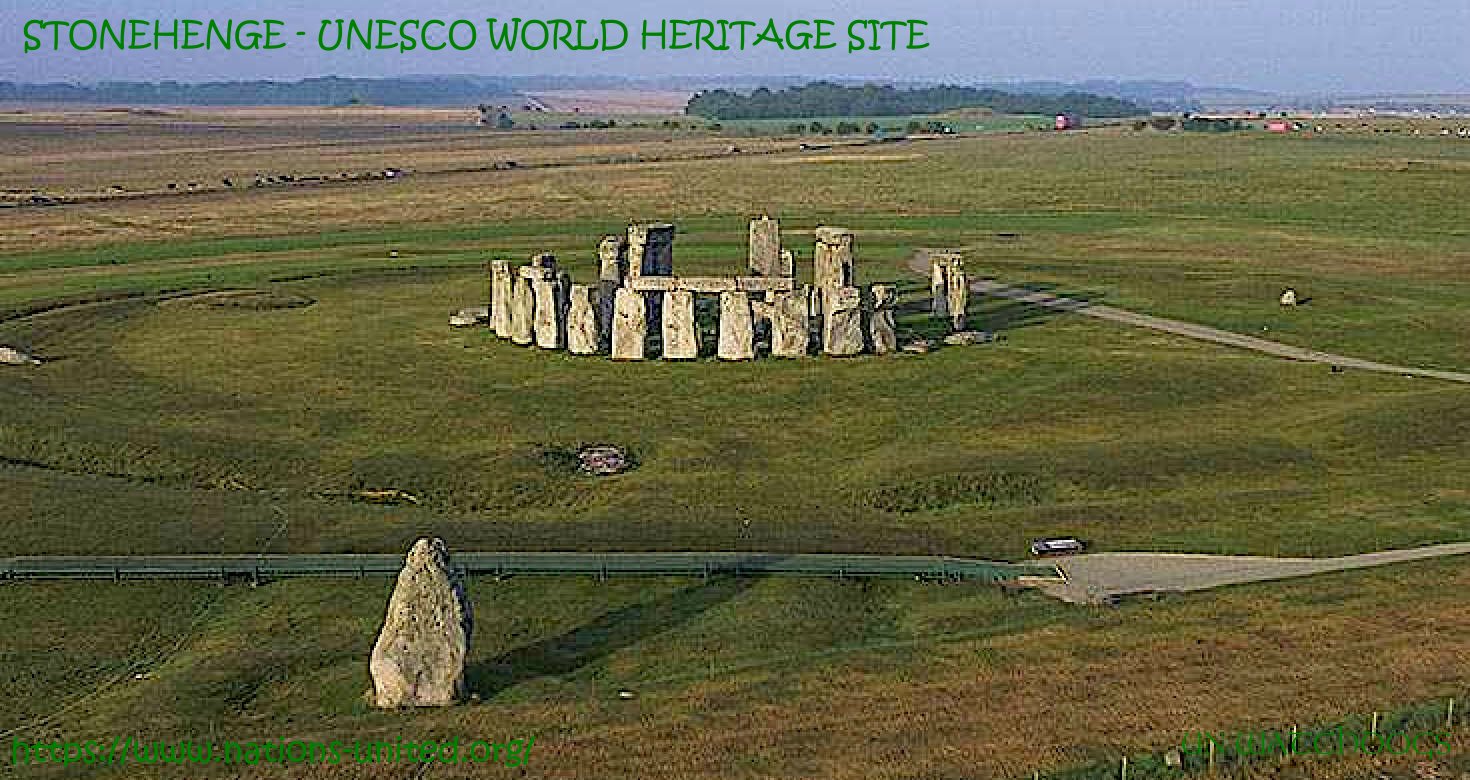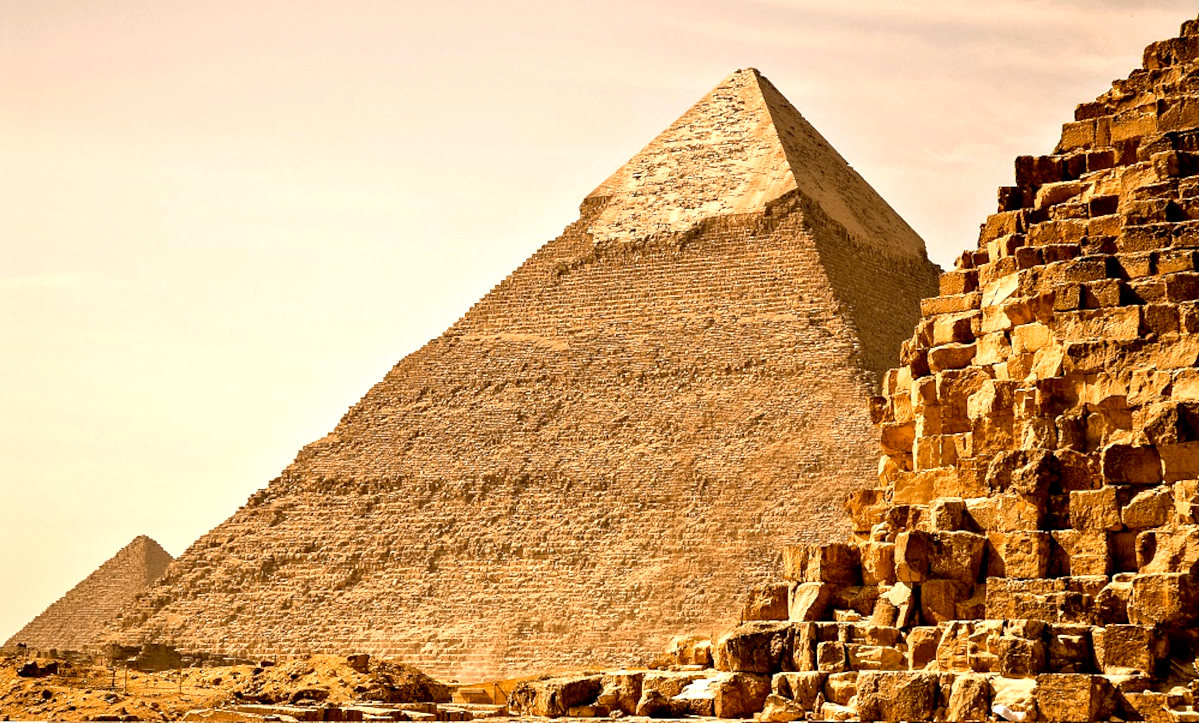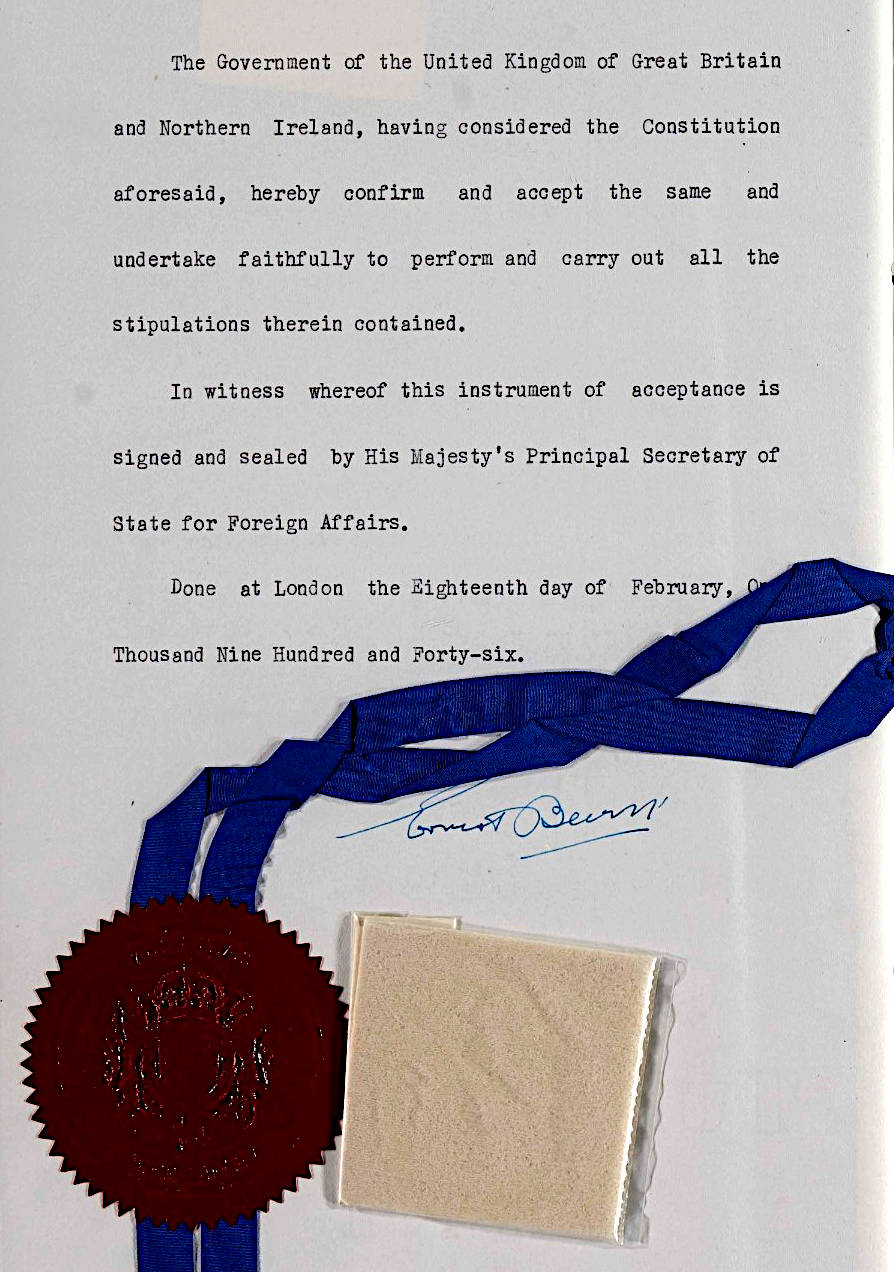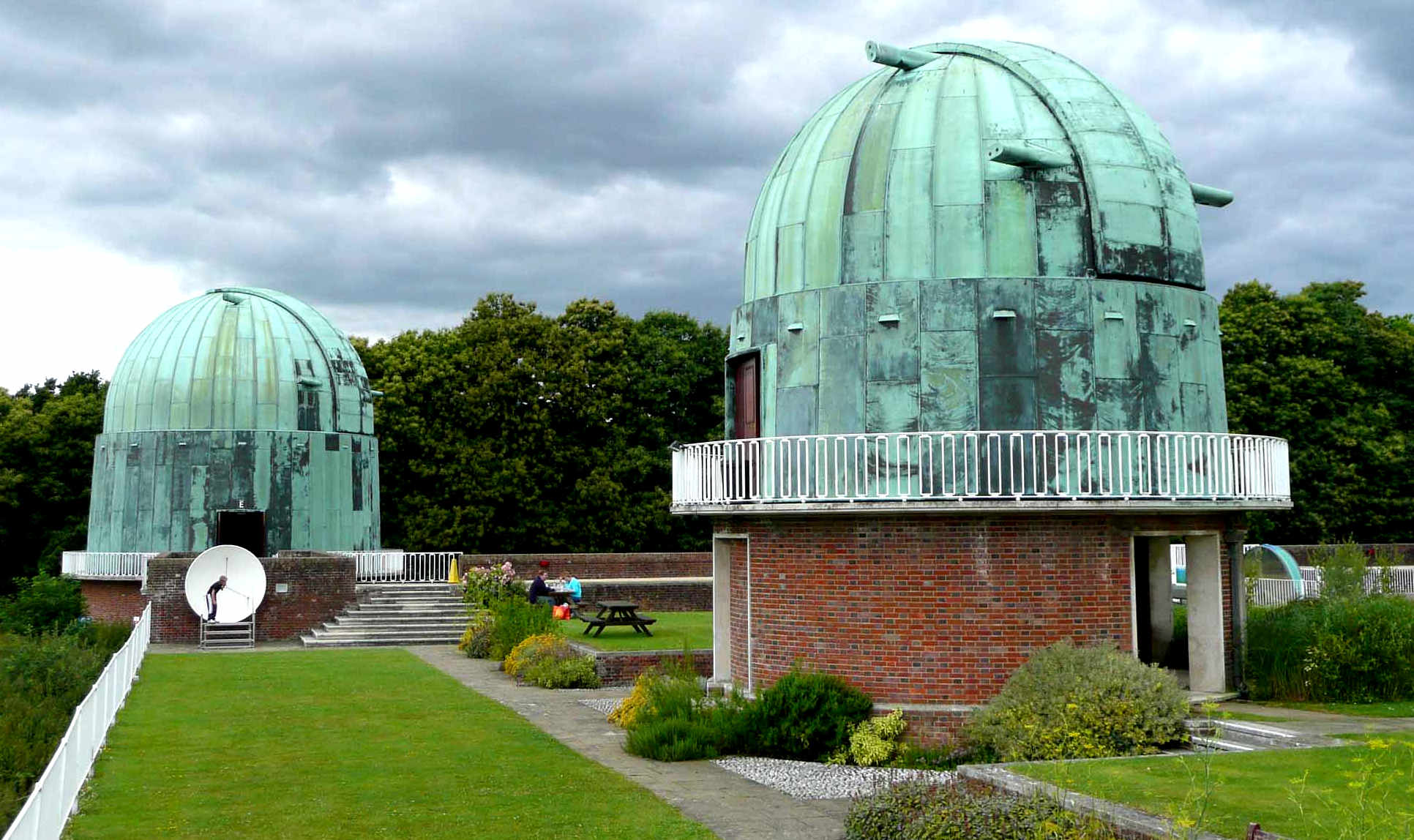|
STONEHENGE - UK UNESCO - A TO Z
Please use our A-Z INDEX to navigate this site or see HOME
|
|
Stonehenge is one of the most iconic and mysterious prehistoric monuments in the world.
Early constructors only had stone and wood from which to build. Steel
and glass would come later. It is natural then, for humans to use what
was available to them: stone.
- Symbol of power: The sheer effort required to build Stonehenge suggests it was a symbol of power and organization for the people who created it.
HOW DOES STONEHENGE COMPARE TO THE GREAT PYRAMIDS
Here's a breakdown of how Stonehenge and the
Great Pyramids compare in terms of their construction timelines.
https://www.english-heritage.org.uk/visit/places/stonehenge/history-and-stories/history/significance/
|
|
A World Heritage Site is a landmark or area with legal protection by an international convention administered by the United Nations Educational, Scientific and Cultural Organization (UNESCO). World Heritage Sites are designated by UNESCO for having cultural, historical, scientific or other form of significance. The sites are judged to contain "cultural and natural heritage around the world considered to be of outstanding value to humanity".
|
|
|
According
to their website, the UK's National Commission for UNESCO
is governed by a Board of Non-Executive Directors, led by their Chair. Each Non-Executive Director is formally appointed by the FCDO and is a specialist in one of UNESCO’s core programme areas. The day-to-day operations of the Commission are undertaken by a Secretariat, led by our Chief Executive and Secretary-General.
SITES IN OR ASSOCIATED WITH THE UNITED KINGDOM
There are 33 UNESCO
World Heritage Sites in the United Kingdom and the British Overseas Territories. The UNESCO list contains one designated site in both England and Scotland (the Frontiers of the Roman Empire) plus eighteen exclusively in England, five in Scotland, four in Wales, one in Northern Ireland, and one in each of the overseas territories of Bermuda, Gibraltar, the Pitcairn Islands, and Saint Helena. There is an additional site partly in the UK territory of Akrotiri and Dhekelia, but is regarded to be part of Cyprus's list. The first sites in the UK to be inscribed on the World Heritage List were Giant's Causeway and Causeway Coast; Durham Castle and Cathedral; Ironbridge Gorge; Studley Royal Park including the Ruins of Fountains Abbey; Stonehenge, Avebury and Associated Sites; and the Castles and Town Walls of King Edward in Gwynedd in 1986. The latest sites to be inscribed were The Slate Landscape of Northwest Wales and Bath Spa (as a component of the Great Spas of
Europe) in July 2021.
TENTATIVE LISTINGS UK 2023
- Birkenhead the People’s Park [Cultural]
ACCREDITED LISTINGS UK
BLAENAVON - NATIONAL COAL MUSEUM, IRONWORKS, CULTURAL LANDSCAPE, SOUTH WALES STONEHENGE - PREHISTORIC, NEOLITHIC STONE CIRCLES, SALISBURY PLAIN, WILTSHIRE WESTMINSTER ABBEY - HOUSES OF PARLIAMENT, LONDON, ENGLAND
INTERNATIONAL ACCREDITED LISTINGS
ACROPOLIS - ATHENS, ANCIENT GREEKS, PARTHENON, TEMPLE ATHENA NIKE ANGKOR WAT - HINDU BUDDHIST TEMPLE RELIGIOUS COMPLEX, CAMBODIA CHICHEN ITZA - ANCIENT MAYAN CITY, YUCATAN PENINSULA, MEXICO COLOSSEUM - ROMAN HISTORIC CITY CENTRE, ROME, PANTHEON, ITALY EASTER ISLAND - RAPA NUI, POLYNESIAN HEAD STATUES, PACIFIC OCEAN GREAT WALL OF CHINA - 3RD CENTURY BC EMPEROR QIN SHI HUANG & MING DYNASTY MACHU PICCHU - PYRAMID, PERU, INCAN LOST CITY, ANDES PETRA - TREASURY, AL-KHAZNEH, SIQ GORGE, NABATAEANS, SOUTHERN JORDAN PYRAMIDS - GREAT SPHINX, MEMPHIS NECROPOLIS, GIZA, EGYPT TAJ MAHAL - MAUSOLEUM BUILT BY SHAH JAHAN, AGRA, INDIA VATICAN CITY - THE WORLD'S SMALLEST, HOLIEST CHRISTIAN STATE
TENTATIVE LISTINGS
PORT ROYAL - JAMAICAN SUNKEN CITY 1692, PIRATES HISTORY
CONTACTS
LINKS & REFERENCE
https://unesco.org.uk/
|
|
|
A FULLER UNDERSTANDING OF HUMAN DEVELOPMENT - Due to the pace of development, sometimes significant gaps exist in the records, as to how man leapfrogged from coal fires, to steam, to electricity, computers and finally the renewable energy age, to combat climate change.
|
|
|
Please use our A-Z INDEX to navigate this site, or return HOME
|
|
|
This website is Copyright © 2025 Climate Change Trust & Injustice Alliance The views, performance reviews and opinions of the Trust are protected by Articles 18 and 19 of the Universal Declaration of Human Rights.
|
